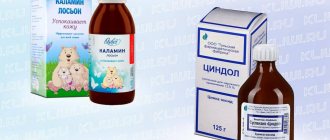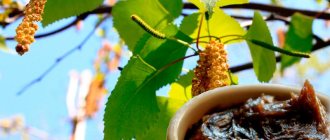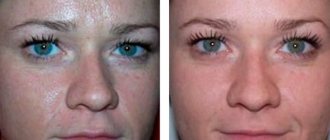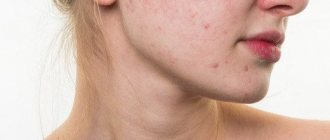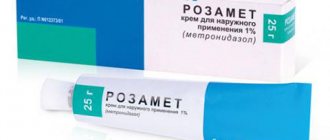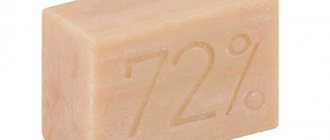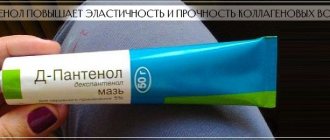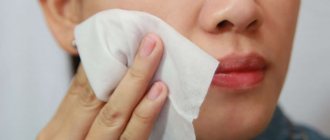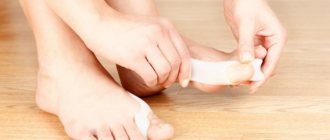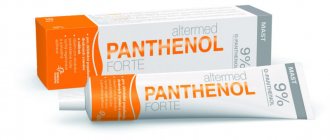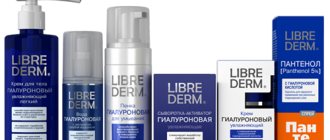Nowadays there are a great variety of remedies for acne - from pharmaceutical ones to homemade ones. Among the latter, the so-called chatterboxes are very popular - products made on the basis of alcohol or tinctures, with the addition of medications. They are good because, with the help of alcohol, they destroy harmful bacteria, and thanks to the medicine, they heal and soothe the skin. We even talked about how to cook the same according to the classic recipe. But among chatterboxes there are not only homemade ones, but also pharmacy ones. One of these is Tsindol for acne and post-acne.
In this article we will try to find out whether this product really has the effect that customers expect from it, we will take a closer look at the instructions for this product and read reviews from people who have already had experience using this drug.
Does Tsindol help with acne?
Tsindol is an antiseptic drug for topical use. Unlike antibiotics, it affects the habitat of bacteria, making it unsuitable for their life and reproduction. Antiseptics are less effective than antibiotics, but they have significantly fewer side effects and bacteria do not develop insensitivity to them.
How are bacteria involved in the pathogenesis of acne? They penetrate clogged sebaceous glands, small scratches and enlarged pores, causing inflammation - red pimples. Bacterial activity can be triggered by a decrease in local immunity (due to a cold, stress or hormonal changes), disruption of metabolic processes in the skin (thick secretion of the sebaceous glands) or neglect of personal hygiene rules (activation of bacteria). Tsindol destroys excess bacterial activity, thereby not only fighting acne, but also preventing the appearance of new ulcers.
Therapeutic properties, emollient effect, protective role
The composition of the drug allows you to have a versatile effect on the skin:
- The main reason for which this drug is prescribed is antiseptic. Bacteria die, stopping their activity harmful to the body;
- Emollient effect - the ointment has the consistency of a thick liquid, contains oil, which allows you to evenly distribute the medicinal substance, simultaneously delivering nutrients, stimulating regeneration, avoiding the appearance of post-acne and scars. The face becomes smoother and healthier, the functioning of the sebaceous glands is normalized, and the likelihood of new acne formation decreases;
- Protective effect - the product restores the protective lipid layer. It is necessary for the elasticity of the epidermis, reducing bacterial activity, mitigating the effects of sunlight, low or high temperatures, and wind. Soap and most cleansers damage this layer; it needs to be restored.
Composition, release form, price
The main active ingredient of the drug is zinc oxide. It is an inorganic substance that is toxic to most skin bacteria. Zinc is not dangerous for humans if it is used strictly according to the instructions, only externally. Ethyl alcohol is used as a solvent - zinc oxide does not dissolve in water. In addition, alcohol has an additional antimicrobial effect, relieves acne pain, and reduces the activity of the inflammatory process.
Glycerin has a softening effect, acts as an additional solvent and gives the drug the desired thickness. It also helps the drug to be distributed evenly over the surface. Talc, starch and water complement the effect - they bring the consistency of the medicine to the desired properties.
Dosage form – suspension, i.e. a thick liquid interspersed with undissolved substances. Available in bottles that need to be shaken before use.
Storage conditions and periods
Tsindol must be stored at home in compliance with the following rules:
- Temperature regime not higher than +15°C;
- No exposure to direct sunlight;
- Protection from children and pets;
- Separate storage from dishes and food.
If the described conditions are met, a closed bottle of solution can be stored for 2 years from the date of manufacture.
During long-term storage, sediment may form, which is a normal and natural process: just shake the bottle vigorously to restore the structure of the solution.
The sediment can also be used as a medicine for external treatments.
Indications (when to use Tsindol) and contraindications for use
Tsindol is used for various inflammatory lesions of the skin, not only on the face , but throughout the body. Thanks to its drying, softening, antimicrobial effect, the drug can be used to combat acne, diaper rash, erythroderma, prickly heat, and irritation of unknown etiology.
Against acne, Tsindol can be used for single lesions or active rashes throughout the body (acne can affect not only the face, but also the neck, back, chest, and forearm). The drug can be used for concomitant inflammatory skin lesions - dermatitis of various origins, diaper rash, prickly heat, boils, ulcers.
Hypersensitivity to the drug is possible - if it is detected, Tsindol should not be used. It is also not recommended for children due to the fact that it contains alcohol. Ethanol can be absorbed through the skin, especially in infants, causing severe poisoning. It is not used for deep damage - the effectiveness is quite low.
detailed information
Composition: zinc oxide. Auxiliary components: starch, medical talc, alcohol, glycerin and water. Price: 30-50 rubles on average. Analogues: zinc, desitin ointment, zinc paste, zinc oxide liniment, Diaderm cream. Treats: rosacea, acne vulgaris, inflammatory and purulent acne. Contraindications: hypersensitivity to zinc oxide. Feature of the drug: helps reduce skin oiliness. Disadvantages of the drug: causes dry skin.
Who among us in our youth did not encounter this nightmare - acne? I think that there is no such person, but acne is not only a problem for young people, because mature people are also susceptible to it. Therefore, an effective remedy for this scourge will always be in demand. People are sometimes forced to pay a lot of money for not the most effective means. In addition to the price barrier, there is another factor that hinders treatment for acne - this is the fact that not all drugs are on sale, and in order to buy them you have to waste your time, go to the clinic for a prescription, and stand in line. Just imagine - goosebumps. And then, people suffering from facial acne are unlikely to want to show themselves in a public place again, preferring treatment at home, in privacy, rather than visiting medical offices.
But there is a drug that is affordable and superior to many others in effectiveness - this is Tsindol (C) suspension, this is a medicine for those who do not agree to pay a lot of money for not the most effective drugs. People who do not run after advertised brands, who only want results from a medicine, will find these qualities in C. Having an affordable price and being available for free sale, it is ideally suited for independent, home-based use, saving you from hours-long queues at the clinic and from unnecessary expenses on imported drugs and procedures.
It not only treats inflamed acne, but also restores the skin from damage by regenerating the epithelium of the damaged area (read more on how to speed up skin regeneration and get rid of blemishes).
Instructions for use: masks, compresses, ointment, cleanser
There are several ways to use Tsindol to fight acne. Official instructions recommend wiping the affected areas with a cotton swab twice a day after washing. This is well suited for preventing acne - for example, with problem skin or while traveling outdoors, when it is not possible to carefully monitor facial hygiene.
The product can also be rubbed in as an ointment - this will increase its cleansing properties. Some patients prepare cindol ointment from it - the acne mash is mixed with Vaseline or another ointment base, essential oils are added if desired and lubricated especially problematic areas of the face. The advantage of this method of applying the medicine is a deeper cleansing effect, strengthening the protective layer, and enhanced nutrition of the epidermis.
A mask with Tsindol is made to combat a large number of acne. The main thing in its use is regularity.
- The simplest mask recipe is to apply the drug to the face and wash off after 15 minutes;
- A more complex one is to mix Tsindol with white clay, also leave for 15-20 minutes, cleanse your face, and apply moisturizer. White clay makes the distribution of the ointment over the face more convenient and uniform and enhances the disinfecting effect;
- To prevent acne, you can use a mask of Tsindol, black clay with water.
Compresses are used to treat local inflammation - for example, one large pimple. Apply the product twice - first moisten the problem area with a cotton swab, then wait for it to dry (about 5 minutes) and apply again. After the second application, wrap it in gauze and leave overnight. This procedure must be repeated until the pimple goes away.
How to use it correctly?
Basic rules for the use of Tsindol, which must be followed for any indications and purposes:
- The solution can only be used for external use;
- It is necessary to avoid its contact with mucous membranes and the gastrointestinal tract;
- To increase safety, it is recommended to use personal protective equipment, including disposable medical gloves.
Preparation for use of Tsindol
Preparation for use of the solution is carried out in accordance with the following instructions:
- Only dry and clean skin is allowed to be treated , so the affected areas are washed with warm water before the procedure - this must be done carefully so as not to cause even more damage;
- The washed area of skin is blotted with cotton napkins or a towel , but friction and other methods of mechanical impact must be avoided;
- The affected area of skin must be kept in the open air for 10-15 minutes to completely dry the surface of the skin;
- Tsindol solution has a tendency to precipitate , so the bottle with the drug should be shaken before use to ensure a uniform and uniform structure.
General rules for use for skin lesions
The standard regimen for using Tsindol is used in the treatment of most dermatological diseases, during which pharmacological preparations based on zinc are prescribed.
Consists of the following features:
- The volume of solution used is determined individually depending on the area of the lesion : there is no need to use too much of the drug, it is enough to cover the affected areas of the skin with a thin, uniform layer;
- If the affected area is small, it is most convenient to apply Tsindol in a targeted manner using a cotton swab. For extensive lesions, sterile swabs or cotton pads are used for these purposes;
- The drug should remain on the skin for 2-4 hours , during this period it is necessary to avoid contact with the treated surface;
- After the specified period has expired, Tsindol is washed off the skin with warm water ; soap and other hygiene products do not need to be used;
- The procedure is repeated 4 to 6 times a day depending on the severity of the lesions;
- The duration of the course is determined individually and depends on the positive dynamics ; treatment is carried out for at least 3-4 days.
If it is necessary to take a course lasting more than a month, it is necessary to coordinate the treatment with a specialist.
Use for severe lesions
For severe and extensive skin lesions, masks based on Tsindol are used.
Application is carried out according to the following scheme:
- The product is applied in layers , using both the solution itself and the sediment, which has a thick structure and is more suitable for such an application;
- Wait 10 minutes and repeat applying the product to the dried layer;
- Apply gauze to the treated areas and moisten the top with cool water;
- After 20 minutes, remove the gauze , but do not rinse off the remaining product;
- If you have oily skin, you don’t have to wash off the drug ; in other cases, remove its remnants 4-5 hours after the procedure;
- At the final stage, it is recommended to carry out additional treatment using an alcohol solution based on salicylic acid and cosmetic products for skin care with a moisturizing and nourishing effect;
- Between applying masks with Tsindol, it is necessary to maintain a break of 4 days ; for dry skin, you can take a break of 5-6 days;
- It is necessary to continue this use of the solution until the damaged area of skin is completely healed . In any case, the duration of the course should not exceed 2 months.
Use for wounds and burns
When treating thermal burns and wounds on the skin surface, the solution is used according to one of the following schemes:
- Treat with a solution and apply a thin layer to the affected area of skin . A gauze bandage is applied on top only if protection from external factors is necessary;
- Wetting a sterile dressing that is applied to deep wounds or extensive burns . The bandage should be worn on an ongoing basis; it is changed after standard hygiene procedures, the solution has dried, or in accordance with the chosen method of treatment.
Use for diaper dermatitis
One of the indications for the use of Tsindol is diaper dermatitis.
His treatment is carried out in accordance with the following instructions:
- Treatment begins immediately after the first signs of diaper dermatitis appear , even with mild irritation;
- The solution is applied locally only to areas of the skin that are affected or have contact with wet underwear;
- Scheduled treatment is carried out 3 times a day , additionally the procedure is carried out when changing wet underwear.
Use for chickenpox and herpes
When treating chickenpox or herpes, Tsindol is used according to the following scheme:
- A cotton swab is moistened in the solution, after which spot treatment of skin rashes is carried out;
- The procedure is repeated 1-2 times a day at equal intervals;
- Tsindol is used only as an adjuvant, it is not intended for the treatment of chickenpox or herpes;
- It is necessary to continue treating the lesions until they are completely cured, but not longer than the maximum permissible period - 1 month.
The use of Tsindol in the treatment of chickenpox is practiced instead of treatment with brilliant green.
Such measures have the following advantages:
- Rapid stimulation of regenerative processes, reducing the risk of scar formation in areas with deep ulceration;
- No noticeable traces of the solution on the skin, while clothes and bedding remain clean;
- No discomfort during treatment.
Use during pregnancy and lactation
During pregnancy or lactation, standard indications for the use of Tsindol may arise.
The substances included in the drug are not absorbed into the blood through the epidermis, even when treating open wounds with the solution.
Therefore, the following rules are established:
- External use of Tsindol is allowed at any stage of pregnancy;
- External use of Tsindol is allowed during lactation without interrupting breastfeeding.
Use for newborns
Tsindol solution is an absolutely safe drug that does not cause adverse reactions even in newborns.
For infants, the drug is prescribed if the following indications exist:
- Allergic skin rashes;
- The appearance of diaper rash;
- Prickly heat;
- Diaper dermatitis;
- Local irritations caused by wearing clothes or diapers.
When treating newborns using Tsindol, you must adhere to the following rules:
- Application to the facial skin of newborns is prohibited , even if there is irritation on it. Failure to comply with this rule leads to drying out of the upper layers of the epidermis and subsequent peeling, which may result in the addition of pathogenic microflora;
- In newborns, application is carried out locally only on the affected areas of the body . The only exceptions are places in contact with wet laundry - they can also be treated for preventive purposes.
- After changing diapers, re-application of the product is always required..
The use of Tsindol for newborns is recommended according to the scheme described in detail below:
- In the morning, water procedures are carried out using a solution of potassium permanganate , which has a faint pink tint;
- After water procedures, pat the child dry with a cotton towel and allow the skin to dry naturally; Apply local application of Tsindol to clean skin; After treatment, do not dress the child, allowing the preparation to dry naturally in the air.
- Repeated applications of the drug are carried out during the day if necessary. Each time, the skin must be cleansed of sweat, urine or other contaminants, after which it is again treated with a solution;
- In the evening, be sure to bathe in a bath with the addition of potassium permanganate or chamomile decoction to get rid of any remaining drug on the skin;
- The duration of use of Tsindol is 2-4 days , this time is usually enough to get rid of the symptoms of allergies, dermatitis, prickly heat and other skin irritations.
Use in childhood
The use of Tsindol without restrictions is allowed in childhood.
The main indications are:
- Insect bites accompanied by itching, swelling and redness;
- Herpes;
- Chicken pox;
- Diathesis;
- Mechanical damage to the skin;
- Allergic rashes;
- Skin rash accompanied by local inflammation;
- Local peeling.
The rules for using Tsindol depend on the indications available; instructions are given below:
- In all cases, only clean surfaces and thoroughly dried areas of skin are allowed to be treated;
- The drug must be washed off 2-3 hours after application, the treated area should be lubricated with baby cream;
- When treating burns, a sterile bandage is applied, which is also moistened with the solution;
- When treating wounds, scratches and other damage to the integrity of the skin, the solution is applied in a thin layer, applying bandages is not required;
- When treating allergic dermatitis, treatment is carried out 2-3 times a day until the irritation is completely eliminated.
Regardless of the indications for use, Tsindol should not be used for more than a month.
Does Tsindol help with spots?
Spots on the skin can be of various origins - pigmentation disorders, consequences of inflammatory diseases or injuries, improper metabolism in the epidermis. Zinc has another remarkable property - it reduces the formation of melanin in the skin. This effect is quite weak, but systematic use of Tsindol allows you to even out and lighten your skin tone. Pigment spots do not disappear completely, but become less bright and less noticeable against the general background.
The lightening effect of zinc can not only be beneficial - due to a decrease in melanin production, the skin's resistance to ultraviolet radiation decreases, so along with lightening there is a need to use sunscreen or wide-brimmed hats. This effect is not suitable for girls who want an even tan - the ointment lightens the skin, and the tan does not look so impressive.
Side effects
Like any topical product, Tsindol can cause an allergic reaction. It manifests itself as irritation, itching, burning, and even pain in the area of application. If such phenomena occur, you should consult your doctor about the advisability of using such drugs. It may be worth stopping the use of the drug and replacing it with another drug.
When using Cindol to lighten your skin tone, you may experience increased sensitivity to sunlight. This effect also occurs when combined with essential oils. It is advisable to carry out procedures with Tsindol 1-1.5 hours before going outside. Please note that the lightening effect is quite persistent.
Zinc poisoning and overdose are extremely rare. If, when applying the drug, headaches, blurred vision, hearing, fatigue, malaise, or abdominal pain occur, you should immediately stop using Tsindol.
Taking the medicine internally causes food poisoning - characterized by abdominal pain, nausea, vomiting, diarrhea, a sharp deterioration in health, a decrease in body temperature, and possible dehydration.
Interaction with other drugs has not been established. Tsindol increases the effectiveness of antimicrobial agents - both antiseptics and antibiotics, including those taken orally.
Restrictions on use
The suspension alleviates the condition and treats the skin from many ailments of varying severity:
- Diaper rash in babies.
- Bedsores (tissue atrophy in bedridden patients).
- Dermatitis and allergic spots, eczema.
- Ulcers caused by the activity of bacteria and microorganisms.
- Skin burns (sun, chemical, temperature).
- Herpes.
- Cuts.
- Acne.
Tsindol, when used correctly, does not cause harm and acts only on the surface.
There is no prohibition for use due to age or condition, except for an allergic reaction to the components. So you can treat both the delicate baby skin and the sensitive skin of pregnant women.
However, a doctor must still prescribe the drug.
The unpleasant result is a rash and irritation. In addition to allergies, the cause of deterioration is overdrying and thinning of the epidermis. The face turns red, peels and itches. Symptoms disappear after discontinuation of the drug.
In rare cases, damaged skin is moisturized with hypoallergenic ointments and creams as prescribed by a dermatologist. This outcome is likely when:
- redness and sensitivity are ignored;
- the product is used longer and more often than recommended;
- if used incorrectly (typical for self-medication).
Tsindol for acne: effectiveness of use
Before using Tsindol, patients want to know how effective it is. An anti-acne product helps to get rid of them quickly and improve the condition of the skin:
- After the first use, the pain of acne decreases, they decrease in size, and the intensity of the inflammatory process decreases. Small elements of the rash fade, sometimes disappear completely;
- After 3-4 applications, small pimples completely disappear and new ones stop appearing. In large pimples, the inflammatory process stops, they decrease in size, and change color from bright red to brown. The number of blackheads decreases, pores narrow;
- A full course (7-8 days) leads to the complete disappearance of acne, even large ones. After them, there are no pinpoint scars or other defects left. The face looks smooth, its color is evened out, blackheads and enlarged pores disappear;
- Regular repetition of courses (once every 3-4 months) allows you to make this effect lasting, even out your complexion, and reduce the visibility of age spots and scars.
For greater effectiveness, you must use the medicine strictly according to the instructions.
Herpes zoster - causes
The reason for the development of the infectious process is the reactivation of varicella zoster.
Risk factors contributing to the reactivation of the pathogen and the development of the disease are:
- age-related decrease in immunity;
- conditions after organ transplantation;
- long-term use of immunosuppressive drugs, treatment with glucocorticoid hormones, use of cytostatic drugs;
- the patient has leukemia, lymphogranulomatosis, malignant neoplasms, congenital and acquired immunodeficiency;
- decreased immunity after stress, hypothermia, infectious diseases;
- injuries;
- alcohol abuse;
- vitamin deficiency, exhaustion, nutritional deficiency, etc.
Viruses are in latent (hidden) form, however, after exposure to provoking factors, the viruses are activated and lead to the development of herpes zoster.
The time intervals between the primary infection (chickenpox) and the onset of herpes zoster vary from person to person. The disease can develop over several months, years, etc.
Herpes zoster rarely recurs after treatment.
Can Tsindol be used during pregnancy?
Unlike most drugs for the treatment of various diseases, the safety of Tsindol for the expectant mother has been fully proven. A pregnant woman can safely treat acne with this remedy without fear of harming the baby. Moreover, treatment of acne and other pustular diseases during pregnancy is necessary - the source of infection is dangerous for the unborn baby.
Nursing mothers can treat acne on the face and other parts of the body with Tsindol, but the drug should not be allowed to come into contact with the baby’s mucous membranes. Those. Do not apply it to pimples on your chest if they appear, and immediately wash your hands after using the drug on any area of the body.
Reasons for the development of infection
The most important factor leading to the reactivation of the virus is a decrease in immune status. When immune cells can no longer track and destroy virions, they begin to multiply very quickly. Reasons for decreased immunity:
- elderly age;
- pregnancy and breastfeeding;
- long-term treatment with antibiotics and immunosuppressants;
- trauma and surgery;
- frequent viral infections;
- hypothermia;
- excessive insolation;
- stress, emotional tension;
- sedentary lifestyle;
- serious chronic diseases (diabetes mellitus, atherosclerosis, hypertension, hypo- or hyperthyroidism;
- HIV, AIDS and other acquired immunodeficiency conditions;
- oncological pathologies;
- chemotherapy and radiation therapy;
- exacerbation of chronic infections and others.
The disease is always transmitted from a sick person. Ways of spread of infection: through contact (by touching blisters and rashes, violating hygiene rules), through the placenta (from a sick mother to the fetus during pregnancy) and during passage through the birth canal (contact of the biological fluids of the mother with the skin and mucous membranes of the child).
Can it be used by children?
The product can be used in children under one year of age with diaper rash. It is important to take precautions - cover the treated area with clothing or a diaper so that the baby cannot reach it with his hand. It is not advisable to treat large areas of the body with Tsindol - this product contains alcohol, and the baby’s skin is highly permeable, which risks alcohol poisoning.
In children over one year old, Tsindol can be used in strict accordance with the instructions. It is necessary to strictly ensure that the baby does not ingest the substance, so young children need to carry out the treatment only in the presence of adults.
Use of Tsindol for chickenpox
For chickenpox, it is permissible to use Tsindol in combination with brilliant green or instead of it. The product effectively fights blisters on the skin and prevents bacterial infections. Unlike brilliant green, it has no color, therefore, the patient will not experience discomfort, embarrassment, typical for the treatment of chickenpox.
It should be remembered that the disease is very contagious, so the patient should be quarantined. Currently, the percentage of schoolchildren and adults who did not have chickenpox in childhood is increasing, so even an adult patient can pose an epidemic danger to other adults.
Thus, cindol not only fights acne, but also solves a variety of skin problems:
Causes
The causative agent of this disease is a virus of the Herpesviridae family - herpes virus type 3. This type of lichen occurs in people who have previously had chickenpox as a secondary infection. The disease mainly affects older people. This disease can occur again in some people. Herpes zoster in children is transmitted to them through contact with sick people, but more often in children the disease manifests itself as typical chickenpox.
This disease develops as a result of reactivation of the herpes virus after a long latent stay (incubation period of up to tens of years) in the patient’s body. The virus that causes this disease is not transmitted from other patients, but is located in the spinal nerve ganglia. When it begins to multiply actively, it causes changes in the spinal ganglia, as well as characteristic rashes on the areas of the body associated with them. Basically, lichen is localized along the location of the intercostal nerves, as well as in the area of the systems innervating the face.
